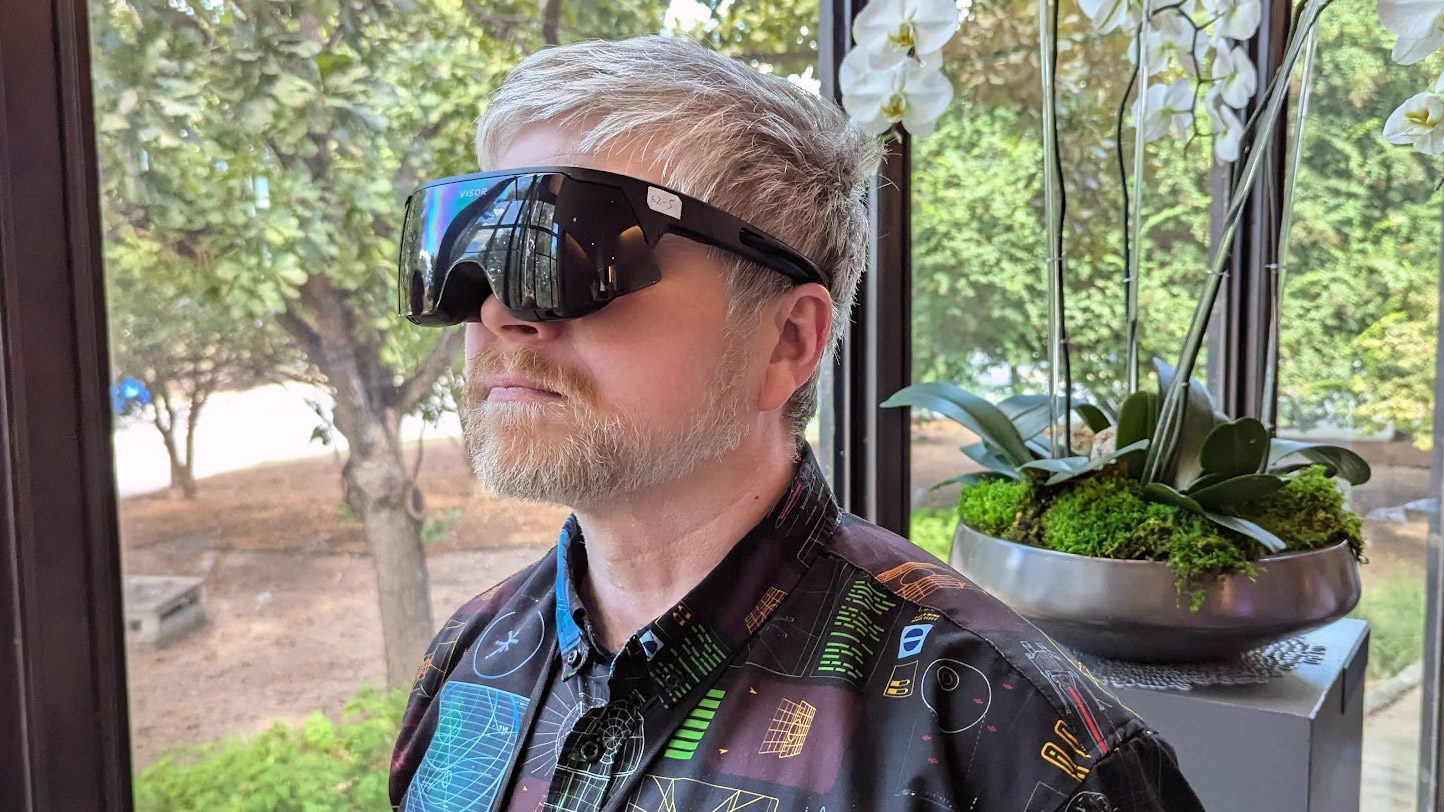The Immersed IRL event, held yesterday in Austin, Texas was the company’s big moment to showcase its upcoming headset and build confidence that it was on track to deliver on the promise of an ambitious headset. But a botched demo may have done the opposite.
Eric Liga is Chief Scientist at Net Edge VR, a Houston-based company specializing in the creation of VR training software. He has run the Houston VR Meetup for the past ten years, and was programming director for the Immersive Technology Conference, one of the first conferences to focus on uses of AR and VR in business and industry. He has given presentations about VR at NASA, the Translational Research Institute for Space Health, the Houston Global Health Collaborative Conference, and many other industry events.
Immersed IRL drew attendees from around the world. I stood in line with a pre-order customer from Japan, another who had driven in from Canada, a journalist from England, and others from a dozen different US states, all eagerly waiting to try the company’s upcoming Visor headset. The long wait would end in frustration and disappointment for most of them, tempered somewhat by a widely-expressed hope that Immersed might yet deliver on its promises in the end.
Visor is an ambitious, productivity-focused headset designed by Immersed, a small, formerly software-only company, in conjunction with an array of industry partners. It is intended for a largely unmet use case: doing ‘desktop productivity’ work to make use of the unlimited canvas afforded by VR, but with a lightweight, comfortable, socially acceptable, high-resolution headset.
While the Apple Vision Pro is largely intended for productivity (with Apple even coining the term “spatial computing” to emphasize its productivity and ‘computing’ focus), it missed the mark on a number of fronts. Its high weight and front-heavy balance make extended wear uncomfortable. Its size, shape, and uncanny-valley eye simulation on the front of the headset make many users hesitant to wear it in public or in social settings. Add to that its eye-watering price-point of $3,500—and the fact that only users of Apple laptops and desktops get the full productivity benefits—and it’s easy to understand why there’s interest in bringing a competitor to the market that chooses some different trade-offs.
The Visor’s final hardware design, revealed on stage by Immersed founder Renji Bijoy, weighs roughly 185 grams (less than a third of the Apple Vision Pro’s weight), in a thin form factor.
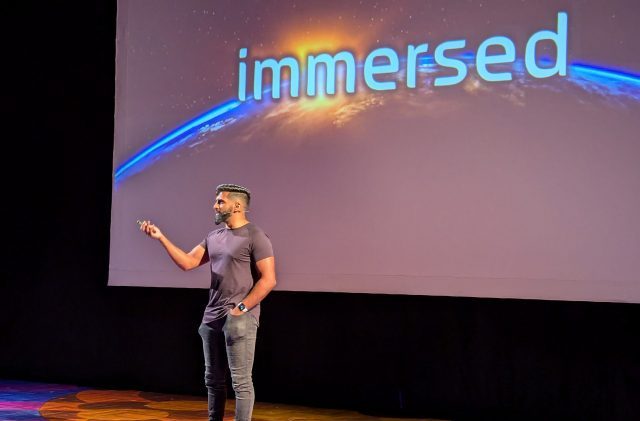
From the front, it does a credible job of looking like a slightly oversized pair of sunglasses. The illusion is less successful from the side due to the width of the optics, but it’s at least in the ballpark of something a user could wear while working at a coffee shop without drawing too much attention. Its screens boast a slightly higher resolution than the Apple Vision Pro, and are intended to allow it to simulate up to five large 4k monitors in a virtual or mixed-reality workspace. It eschews handheld controllers for eye-tracking and hand tracking, for any interactions not handled by a mouse or keyboard.
The tethered battery (which also houses the headset’s wi-fi and Bluetooth hardware) can be set on the desk while working, dropped in a pocket when collaborating on a virtual whiteboard, or excluded completely when connected to a PC. The fact that the radio-emitting components are housed in the optional battery pack means the headset (with some other minor adjustments) could be viable for use in high-security military and government facilities—a potentially lucrative market.
The headset is priced at $400 (but will rise to $500 after October 1st) is subsidized by a required one or two year subscription to Immersed’s software ($40/mo for 2 years, or $60/mo for 1 year). This means that the total cost is a good deal higher than it appears, but makes the up-front cost more palatable. When the subscription is included, a total cost of between $1,120 and $1,460 places it at over double the price of a Quest 3, but less than half of the price of an Apple Vision Pro.
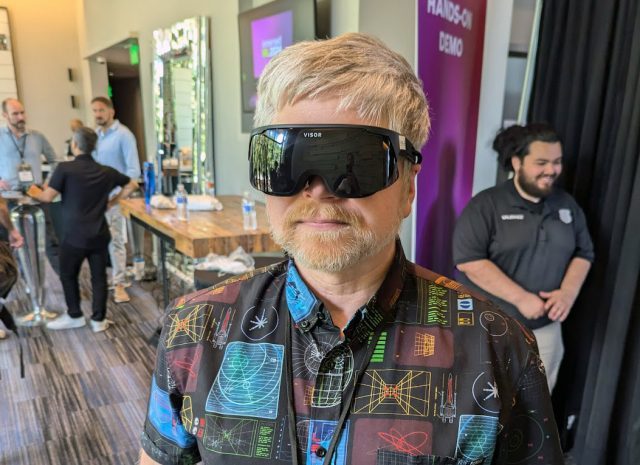
While the Visor is usually shown with over-the-ear stems, like a pair of sunglasses, it will also ship with a head strap designed to better balance its weight and improve comfort. Bijoy was candid about the fact that the stems are there to make non-VR users more comfortable with the idea of wearing a headset. He fully expects users to switch to the strap for extended, every-day use, and said future versions might not include the over-the-ear stems at all.
The prospect of a high-end productivity headset at a reasonable price being produced by a small software company raised an understandable mix of excitement and skepticism from the VR community. The Immersed IRL event was intended, in large part, to demonstrate that the company can deliver on its ambitious promises. But it may well have done the opposite.
At the end of the keynote, Bijoy said that the headsets were being updated to a new firmware, and that the start of promised demos might be slightly delayed. I headed to the demo line, scheduled to be part of the first demo group at 11am. At 11:30, a harried-looking group of Immersed employees pressed quickly through the crowd with headsets cushioned in styrofoam and disappeared behind the black curtain screening off the demo area.
For the next couple of hours, we waited patiently, getting occasional hints from event workers that setup was still in progress, and that demos should start soon. Eventually, a voice over the intercom announced that demos were starting, but that software issues meant that they would be “hardware only” demos.
What that ended up meaning was that we could look at and handle the headsets, and we could even put them on our heads to feel the comfort and weight. But that none of the headsets would actually be powered-on. I asked if we could at least power them up to see the quality of the displays, even if we couldn’t use them running a proper virtual environment, but was told no. Questions to determine when an actual demo might be possible—late in the day? Tomorrow?— were met with discouragingly noncommittal responses.
Finally getting one of the headsets in hand, I did my best to learn what little I could without seeing it in action. The weight was indeed lighter than any headset I’ve tried, other than the Bigscreen Beyond; more like an oddly heavy pair of sunglasses than an XR headset.
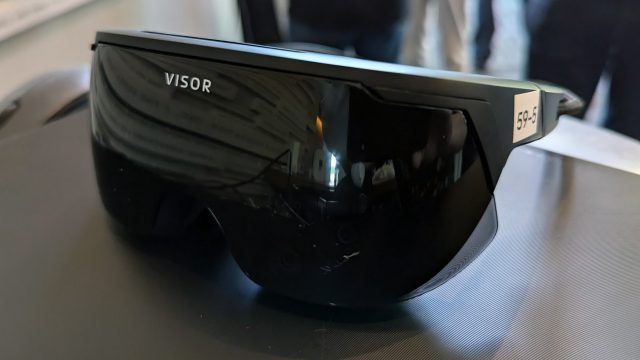
It wasn’t as comfortable on the bridge of my nose as I’d hoped, but pressing down on the stems slightly to take a little of the weight off of the front (as the to-be-included, but apparently yet-to-be-manufactured head strap would do) made it comfortable enough that wearing them for a full work day should be reasonable. The lenses appeared to be of high quality (but I won’t be able to fully judge them until the headset is fully functional) and the build and materials looked reasonably good.
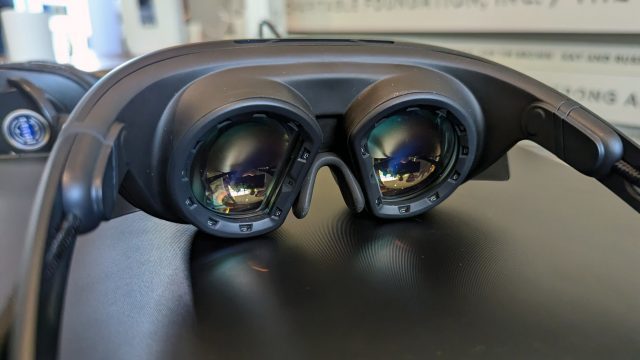
As glum looking attendees filed through the demo area, trying on the lifeless headsets, a single engineer worked feverishly in a corner. It was clear from the glow emitting from his headset that it was powered-on. A crowd gathered to watch him from just outside the demo area, with an armed guard periodically asking them to step back, as the clock ticked down to the time when the event would be required to vacate the venue.
Less than half an hour before the event ended, the engineer sprinted to a demo station, headset in hand, and a small handful of us were ushered back in. We were each given a minute or so to try on the headset… but it still wasn’t exactly what we expected.
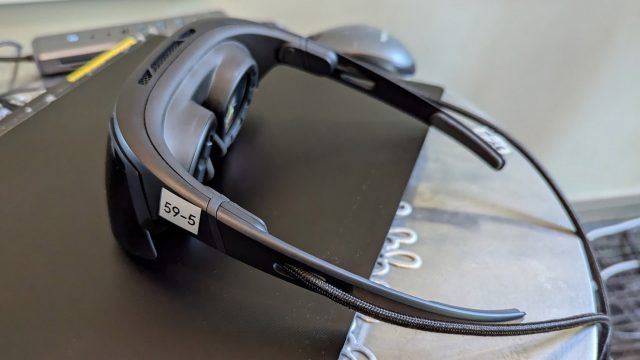
The Visor was displaying a series of images and videos, but it was spreading the image across both eyes without adjusting for stereo overlap. This meant that the only way to view it without discomfort was to close one eye. There was no head-tracking or virtual environment, just a video playing directly to the displays.
From what I could see, the optics looked very good, with high clarity, a relatively large sweet spot, and minimal distortion at the edges, when the headset was properly aligned. The screen itself appeared to be vibrant, sharp, and very high resolution. You could not make out individual pixels. It was difficult to say given the limited content and brief demo time, but it looked like it was plausibly in the same league as the displays in Apple Vision Pro in terms of resolving power.
While the cameras on the headset appeared to be legitimate, it was impossible to test the passthrough view, hand-tracking, eye-tracking, positional-tracking stability, and a host of other critical features.
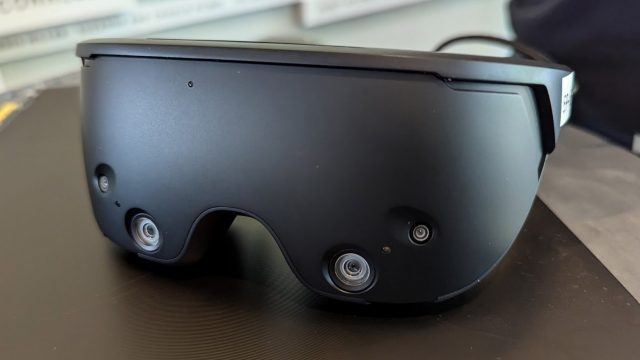
I asked if I could drive back to Austin for a proper demo once the software was up and running, and was promised that I could. If and when such a demo takes place, I’ll have more to share.
After the brief and botched demo, Bijoy acknowledged that Founders Edition headsets would not be shipping soon after the event (as was originally announced). While the hardware may be close to final, I wasn’t shown anything that gave me confidence that the necessary software is approaching completion.
The Immersed crew seems sincere in their intention to bring the Visor to market, and their goals and design choices strike me as good ones. That said, I’ll be holding off on ordering one until I see signs that the software is stable, nearing feature-complete, and the promised features work as intended. I’ll be watching their progress closely, as, I’m sure, will their financial backers and pre-order customers.
,
